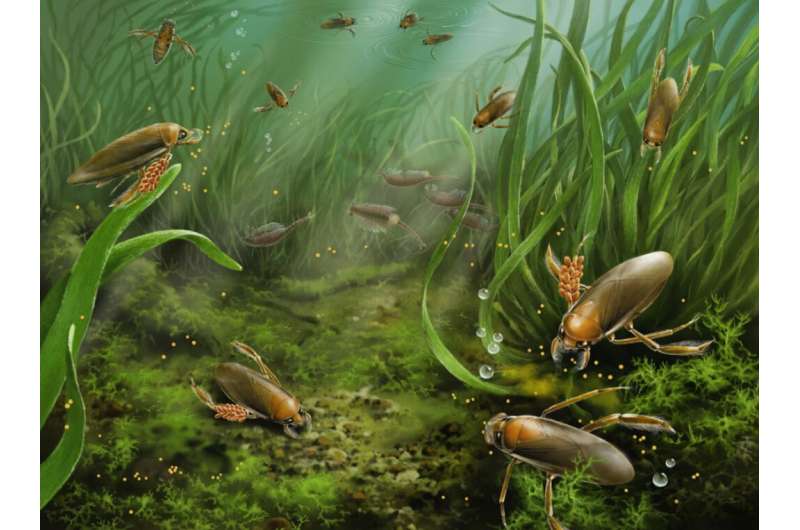July 14, 2022 report
Earliest known example of brood care found in extinct insects from China

At a dig site in China, a team of researchers at the Chinese Academy of Sciences working with a colleague from the Netherlands has uncovered the earliest known example of brood care in an insect. In their paper published in Proceedings of The Royal Society B: Biological Sciences, the group describes the extinct water bugs and the results of close inspection of their legs.
Prior to this find, the earliest known example of brood care in insects was from samples dated back approximately 122 million years. The water bugs found by the team in China were dated back 160 million years and have been named Karataviella popovi. The researchers found them while digging in rock deposits at a site near Daohugou in a northeastern part of China. In all, they found 30 fossilized specimens, all female, and all with a unique leg characteristic. Each of them had a stalk extending from their mesotibia (middle) left leg for the purpose of holding eggs, likely until they hatched.
The researchers distinguished the head, abdomen and legs of the ancient water bugs embedded in the rock. The eggs were situated in neat rows of six or seven eggs on the left leg. Such an arrangement would have allowed the female to lay her eggs directly onto her leg after releasing a sticky mucus to ensure that they would bind to her. The researchers suggest the right leg, which did not hold eggs, was used to maintain balance as the bug traversed the water. Studies of modern insects suggests that the eggs would have jiggled as the water bug walked with its legs underwater, allowing for oxygen in the water to flow freely over the eggs.
The researchers also note that the eggs were approximately 12 mm across and that carrying clusters of eggs on a limb has not been seen in insects before, though it is often seen in crustaceans. They also note that they found the water bugs had a filter-capture mechanism that likely represents a pre-adaption of a trapping mechanism found in later creatures such as fairy shrimp.
More information: Yanzhe Fu et al, The earliest known brood care in insects, Proceedings of the Royal Society B: Biological Sciences (2022). DOI: 10.1098/rspb.2022.0447
Journal information: Proceedings of the Royal Society B
© 2022 Science X Network





















